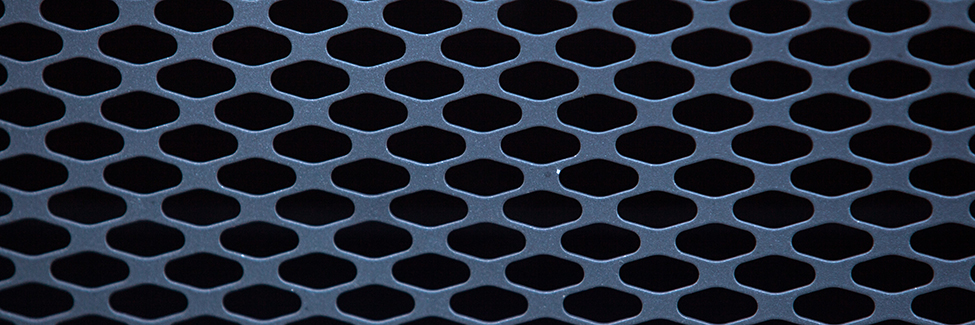
How to Choose the Best Air Conditioner | Research Guide
When it’s time to cool your home or office during warmer months, you might not know where to start, so this guide is created to help you choose the best air conditioner for your needs. We’ll cover methods of cooling, types of air conditioners and coolers, features, appearance, size, safety, energy consumption, and other helpful tips.
Methods of Cooling: Air Conditioning and Evaporative Cooling
Air Conditioning
Air conditioning is a process where heat is removed from an enclosed space causing the air inside that space to cool. Fans are often used in air conditioning to better circulate cooled air around an area.
The most common cooling method of air conditioning uses a refrigeration cycle to move heat from one area (like the inside of a home or office or vehicle) to an outside area. This takes heat from an area where it’s unwanted and disposes of it in another area. While a refrigeration cycle is frequently used in AC units, there are alternative cooling methods like evaporative cooling. Want to know more? Read about how air conditioners work.
Central AC
Central air conditioning most often uses a “split” system in which refrigerant moves to an inside unit, where air is cooled and dehumidified and then distributed throughout a house or office using a duct system, from an outside unit, where heat is deposited.
Room/Non-Central AC
Room (or non-central) air conditioning occurs in spaces where a central AC duct unit isn’t an option. This category of AC includes window units, portable units, and split ductless systems, and they require access to some kind of external ventilation as well as electricity.
Evaporative Cooling
Also known as swamp cooling, evaporative cooling uses water evaporation to cool an area. An alternative to traditional air conditioning, it is very efficient and affordable. However, because of the evaporation process, these coolers should only be used in areas with dry climates with open windows.
Read our swamp cooler buying guide here
Types of AC Units and Coolers
Central AC Units
Consisting of two units (one outside containing the condenser and compressor and one inside containing evaporator coils) and a duct system powered by a blower, central AC units require adequate space but are highly efficient at cooling homes and offices. They are now relatively standard among new structures. However, they can be installed with the help of professionals.
With inside units located inside utility closets, basements, or attics, central AC systems are less noisy and noticeable than other AC solutions, though they require require a hefty initial investment and buildout. They’re also usually more energy-efficient and less unsightly than portable or window AC units.
Window AC Units
Window units are air conditioners placed in a window used to cool a specific room. These units are the simplest kind of non-central AC units and are typically the least expensive option when cooling an enclosed space. They’re generally easy to install (though heavy) and require a nearby outlet. Be sure to note what kind of circuit is needed before purchasing.
Some units also come with a security add-on to keep floor-level rooms safe from opening more than necessary. Keep enough space around the AC unit so that air can easily move around the room.
Read our window AC unit buying guide here
Portable AC Units
Portable AC units offer a flexible solution for room cooling. Though they tend to cost more than window units, they’re easier to move around and install. These units require access to a rounded power outlet and come with a big exhaust hose that fits in most windows.
Portable units can move to different rooms more easily than other solutions since they have legs and detachable accessories. They’re also a convenient solution for rooms where building codes or external obstacles prevent window units. While not as energy-efficient as other units, portable AC units.
Read our portable AC unit buying guide here
Split Ductless AC Units
Also known as “through-the-wall” or “built-in” air conditioners, split ductless AC units require a small hole in a wall and work similarly to window units but with less leakage and noise. While pricier and harder to install than window units, split ductless units are a very energy-efficient solution, especially when only certain rooms need cooling. They also tend to provide better air distribution than window or portable units.
These kind of units provide an experience closer to central AC without the need for ducts and are useful for external structures, added rooms, or workshops. Due to the more complex setup, professional installation is recommended.
Evaporative/Swamp Coolers
While not as powerful as AC units, evaporative coolers use a unique way to cool rooms, relying on the cooling power of liquids moving to a gas state. They use less energy and don’t require any external venting. They also act as humidifiers as the evaporation process adds water to the air. As a cooling solution, evaporative coolers provide a green, affordable, and healthy alternative to other air conditioning systems.
When deciding on an evaporative cooler, be sure to take your climate into account, as areas with dry climates (e.g. the Western United States) will be best able to take advantage of these kind of coolers.
Read our swamp cooler buying guide here
Features
Remote Controls and Timers
Air conditioner remote controls are helpful for those who can’t easily reach the unit or would prefer to change the temperature without moving. While not necessary to operate air conditioners, remote controls can make for a more comfortable experience, especially in larger rooms.
Timers allow you to either pre-cool rooms or reliably shut off air conditioners after a period of time. Using a programmable timer can result in high energy savings.
Dehumidifying
Most air conditioners already act as weak dehumidifiers. Since most people prefer humidity levels around 40%-50%, using air conditioners to bring down humidity to a more comfortable level is an added benefit of the appliance. Some units come equipped with their own dehumidifying mode that can be useful during damp summer days.
Size and Appearance
Vents
Most air conditioners allow you to control the direction of airflow, and some models come with oscillating fans. Be sure to keep in mind where air should flow throughout a room when making an AC purchase. Moveable vents are particularly useful in rooms with odd shapes.
Location
Most modern air conditioners have reasonably well-designed exteriors that can help blend into rooms. Central AC is the most subtle, followed by split ductless units. Portable units can be moved to more convenient locations, but the exhaust hose will still be visible in most cases, and enough room should be left around the unit for safety reasons. Window units can blend with aesthetics but require a significant amount of space outside the window, as well. Be sure to think about space needs when purchasing an AC unit.
Safety
Home Security
When using window and portable AC units, a often overlooked home security issue can arise. For ground level windows, these AC units can provide an opportunity for burglars to enter a home. To avoid this, consider installing any additional security add-ons that are frequently included units, use window frame locks, or install window alarms.
Fire Risk
Each year, improper use of AC units results in thousands of fires. Most fire risks can be easily avoided by following a few simple guidelines. To decrease the risk of fire damage when operating an AC unit, be sure to regularly maintain units, leave plenty of space around them when operating, keep any flammable liquids stored safely, and repair units when they cease operating correctly.
Energy Consumption
SEER Rating
The Seasonal Energy Efficiency Ratio, or SEER for short, is a way of measuring the cooling efficiency of an AC unit. There’s a good amount of math involved, but simply put, the higher the rating, the more efficient the unit. Most modern units’ ratings range from 14 to 25. Note the minimum required SEER in the United States is 13.
Refrigerant Pollution
When improperly maintained, AC units can be far less energy efficient and also leak refrigerant that’s dangerous to the environment. If you notice a leak, be sure to hire a trained professional to investigate and fix the issue.
Tips
Windows and Sun
Rooms with large windows can let in large amounts of sunlight, requiring more powerful AC units. When operating an AC unit in these spaces, consider using blinds or curtains to decrease the energy needed to cool the room.
Air Dispersion and Adjacent Rooms
To keep air circulating more easily, consider using a fan to direct cooler air. If there are any connected rooms without a separating wall or door, note that the AC unit will be cool the entire space.
Good luck on your next purchase – review our guides for recommended air conditioners.
Still have questions? Ask an HVAC expert directly via chat or phone.
Published on 2018-09-02 by Ben Travis
Last updated on 2021-06-08


